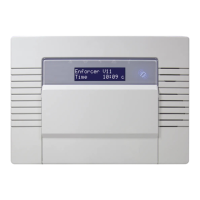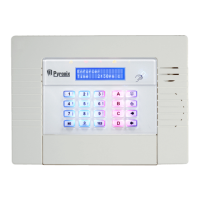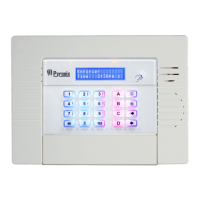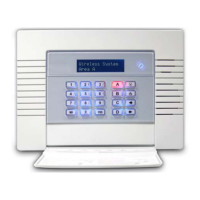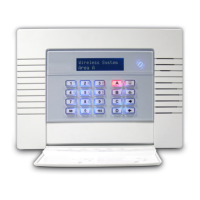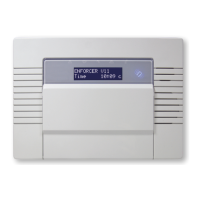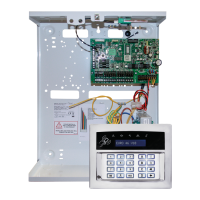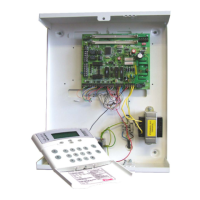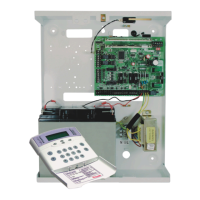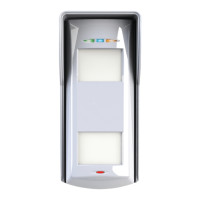52
ENFORCER V11 PROGRAMMING GUIDE
NUMBER & TYPE OPERATION
21 Entry Shock Input
Active when system set. Works in conjunction with EE input type for
detection of forced entry. See page 35 for details.
23 Keyswitch Pulsed*
Accepts input from keyswitch (or equivalent) to Set/disarm the Set
modes assigned to it. Requires momentary action switch to toggle
set/disarmed state.
32 Flood
This input type will work as a 24hr input, any inputs that are
programmed for Flood will activate the external siren.
42 Medical
This input type will work as a 24hr input, any inputs that are
programmed for Medical will activate the external siren.
44 ATE Line Fail Once a ATE line fail has been recognised the input will open.
*The use of these inputs will make the system unable to comply with EN50131-1 Grade 2
#These input types cannot be bypassed.
Entry Shock Input Type (21)
This input type is designed specically for use with systems installed using BS8243 option 6.4.5.
This input type is always used in conjunction with an Entry/Exit input. The Entry/Exit input is a door contact on the initial entry door, and the Entry Shock
input is a non-latching shock sensor tted to the door frame in the vicinity of the lock. If the initial entry door is subjected to gross attack and forced
open, then at the expiry of entry time only one further intruder input need to be activated to signal a sequentially conrmed alarm – the Entry Shock
input counts as the rst to alarm. The Entry/Exit door contact must be opened with 10 seconds of the shock detector triggering for the Entry Shock
response to apply. Triggering the Entry Shock input in isolation will NOT generate an alarm of any kind.
APPENDIX C TIMERS
TIMER FUNCTION RANGE
Entry Time
Entry time for each area. (if programmed as the input type ‘Final
Exit’)
0 – 255 seconds
Exit Time Exit time for each area. 0 – 255 seconds
APP Exit Time Exit time when armed via the smart device app 0 – 199 seconds
Siren Time Cut o time for external sounder. Separate for each area. 2 – 15 minutes
Siren Delay
Delay after intruder alarm before siren live. Not valid within 3
minutes of nal arm or after entry time started.
0 – 20 minutes
Conrm Time
Time period during which a second activation must occur to
qualify as ‘sequentially conrmed’ alarm. NOTE: BS8243 species
a conrm time between 30 and 60 minutes. This also can be
used in conjunction with testing an omit signal.
1 – 99 minutes
HU Conrm Time
Time period during which a second activation on a hold alarm
must occur to qualify as ‘sequentially conrmed’ alarm. NOTE:
BS8243 species a conrm time between 8 and 20 hours. This
also can be used in conjunction with testing an omit signal.
8 – 20 hours
Strobe Time
Time strobe output remains live after siren time ends.
‘99’ means endless.
0 – 99 minutes
Re-Arm No.
Number of times system re-arms after bell time ends.
Please note: Re-arm number applies to each area, and does
not aect emergency alarms. ‘9’ means always re-arm.
0 – 9
AC Signal Delay
Time delay before mains failure or technical alarm notied.
NOTE: Arming ‘250’ = never alarms. System change-over to
battery supply and associated visual alert indication is always
immediate.
Some ATE imposes a randomised delay in notifying a mains fail.
This should be taken into account when arming this timer.
0 – 250 minutes
